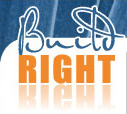Tie-down fixings
Tie-down fixings provide for structural connections to resist uplift and shear forces (lateral loads) in floor framing, wall framing and roof framing.
Where specific tie-down fixings provide equal or better resistance to gravity or shear loads, nominal nailing is not required.
Continuity of tie-down must be provided from the roof sheeting to the foundations.
Where necessary, allowance might need to be made for the counterbalancing effects of gravity loads. If the gravity loads equal or exceed the uplift loads, only nominal (minimum) fixings are required. That is unless otherwise noted for shear or racking loads.

At the roof there is not much dead load to counter-balance the uplift so net uplift is high.
At the top plate there is a bit more dead load to counter-balance the uplift so net uplift is a little smaller.
At the floor there is a lot more dead load to counter-balance the uplift so net uplift is reduced and in lower wind classifications it may be nil.
At the lower floor of a two storey building, there is considerably more dead load to counter - balance the uplift - net uplift is reduced and in lower wind classifications it may be nil.
